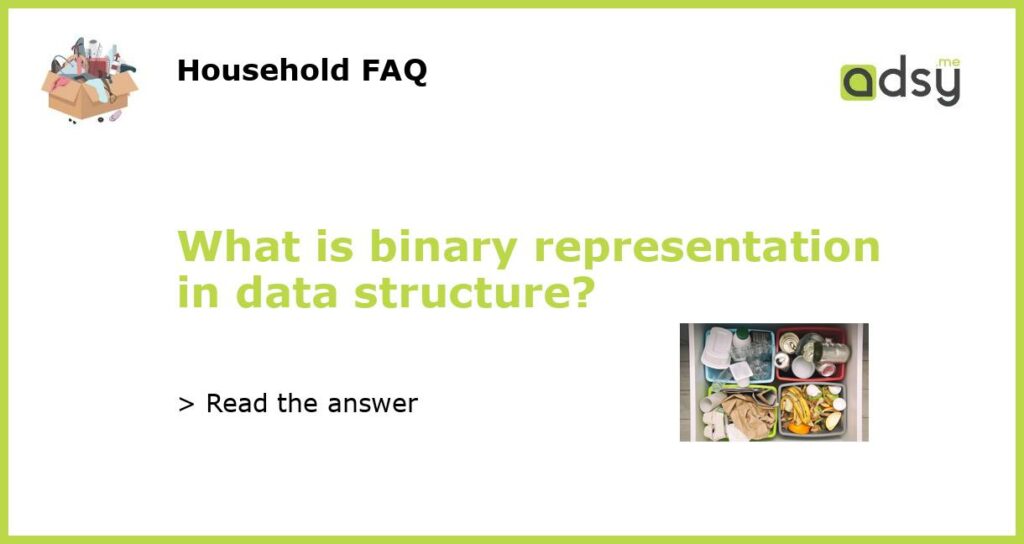Understanding Binary Representation in Data Structure
Binary representation is a method of representing information using only two possible values, typically 0 and 1. In computing, it is commonly used to store and transmit data because it can be easily processed by hardware and software.
Binary Representation in Data Structure
In data structure, binary representation can be used to represent various data types such as integers, characters, and boolean values. For example, a 32-bit integer can be represented in binary with 32 digits, each of which is either 0 or 1. This allows for efficient storage and manipulation of large amounts of data.
Advantages of Binary Representation
One of the main advantages of using binary representation is its simplicity. It is easy for computers to understand and process, and can be quickly converted to other forms such as decimal or hexadecimal. Additionally, binary representation allows for efficient use of memory, as each bit can represent multiple values.
Applications of Binary Representation
Binary representation has numerous applications in the field of computer science. One of the most common is in computer networking, where data is often transmitted in binary format. It is also widely used in programming languages such as C and Java, where it is used to represent various types of data.
Binary representation is a fundamental concept in computer science and data structure. It allows for efficient storage and processing of data, as well as providing a common format for communication between different systems. As technology continues to evolve, it is likely that binary representation will continue to play an important role in the world of computing.






